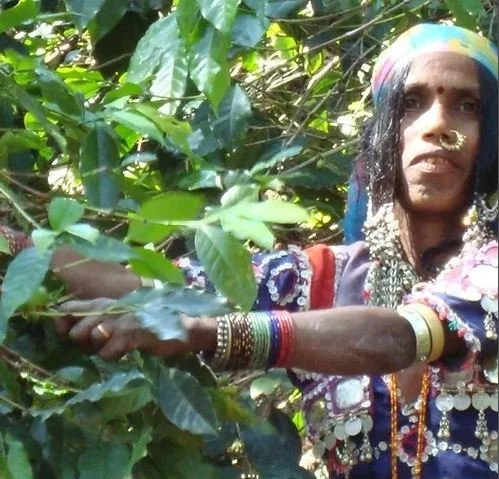9. India Angadi Fermented
84 Cupping Score
India, often associated with tea, actually has a rich coffee history that predates the arrival of tea by more than two centuries. Dating back to the 1600s, coffee was introduced to India, driven by the British quest for a cheaper and more abundant supply of both tea and coffee, leading to their widespread cultivation on plantations across the country.
Typically nestled between 700 and 1,200 meters above sea level, coffee farms in India employ a 'traditional' cultivation method. These farms feature a diverse canopy of two-tier shade, often integrating nitrogen-fixing trees alongside leguminous varieties. It's a common practice to intercrop coffee trees with spices like vanilla or pepper, along with fruit-bearing trees.
Post-harvest, cherries are predominantly handpicked by family members or hired laborers. The processing methods usually involve Natural or Fully washed processes. While most farms sun-dry coffee on patios or tables, larger estates may utilize mechanical dryers. Approximately 30% of coffee production caters to domestic consumption, while the remaining 70% is earmarked for export.
Hoysala Plantation is situated in Angadi village, where the Hoysala Dynasty originated in the 10th century. Coffee cultivation in this region dates back to the 1920s, and the current owners have maintained ownership since 1950. Presently, the third generation of family owners emphasizes meticulous cultivation and processing practices.
The Sarchimor variety trees cultivated in this lot trace their lineage to the original Sarchimor plants introduced to India in the early 2000s. Local farmers, aspiring for superior quality, imported the Sarchimor variety themselves. Subsequently, the Coffee Board of India utilized this Sarchimor line for research, formally releasing a version under the local name, Chandragiri.
The fertile soil rich in humus nurtures the coffee trees, which thrive under shade amidst native plant species and fruit trees. The plantation sustains over 200 species of animals, birds, insects, and reptiles within its canopy. Alongside coffee, the plantation also cultivates black pepper, areca nuts, and various fruits.
Harvesting is selectively conducted by local laborers, segregating lots by variety and day harvested. At the on-site mill, cherry is meticulously hand-sorted before undergoing two rounds of floating to eliminate overripe or underripe cherries.
Subsequent stages involve pulping and separating cherry by density, followed by fermentation and washing. The parchment is sun-dried on breathable fiber mats, consistently raked to ensure uniform drying, and covered during peak heat and overnight to prevent condensation.
Post-drying, the coffee rests in well-ventilated storage rooms for 30 to 45 days before undergoing hulling and preparation for export at the dry mill. This meticulous process ensures the delivery of exceptional coffee to global markets.
Origin: India
Region: Karnataka
Altitude: 930 m.a.s.l
Varietal: Sarchimor
Processing: Fully Washed
Flavours: Dried Fruit, Dark Chocolate, Almond & Brown Sugar

